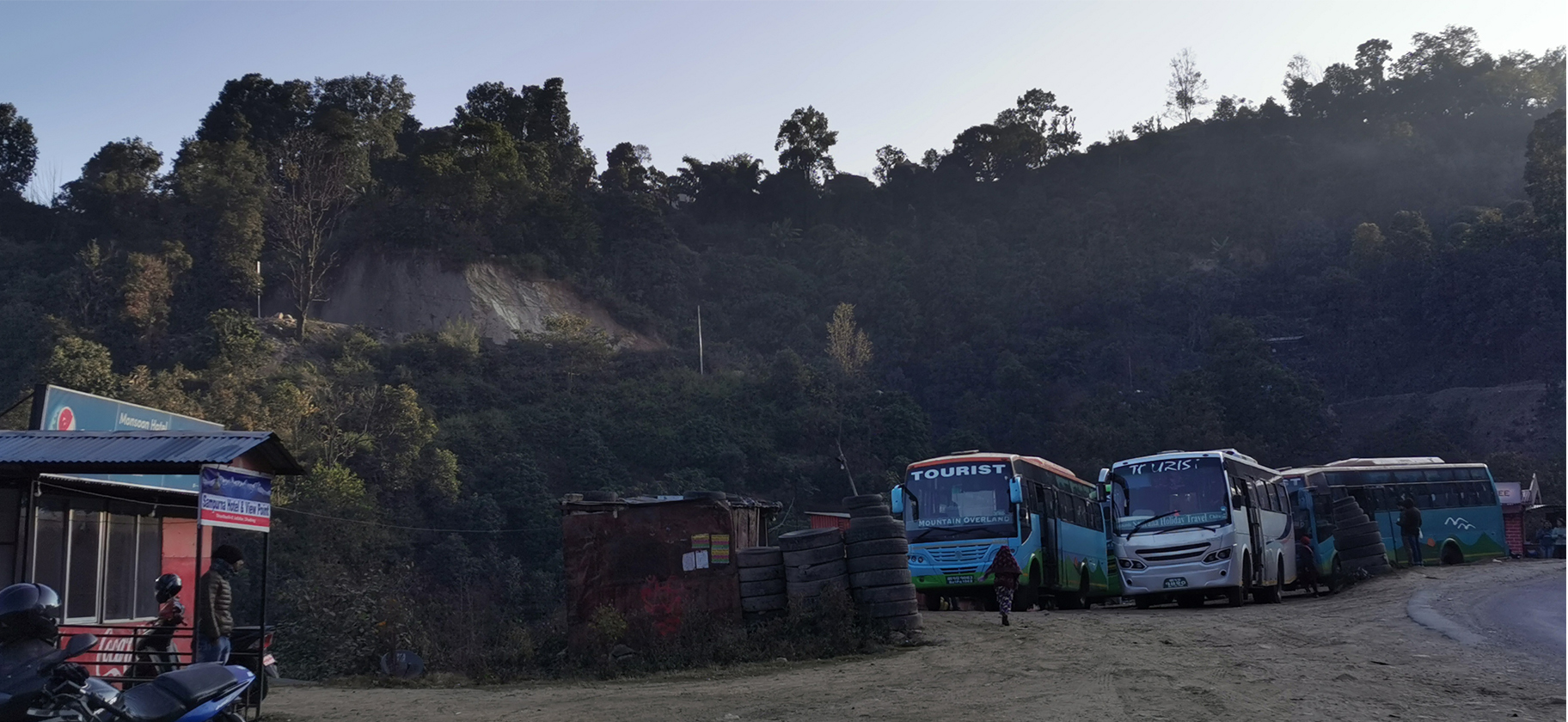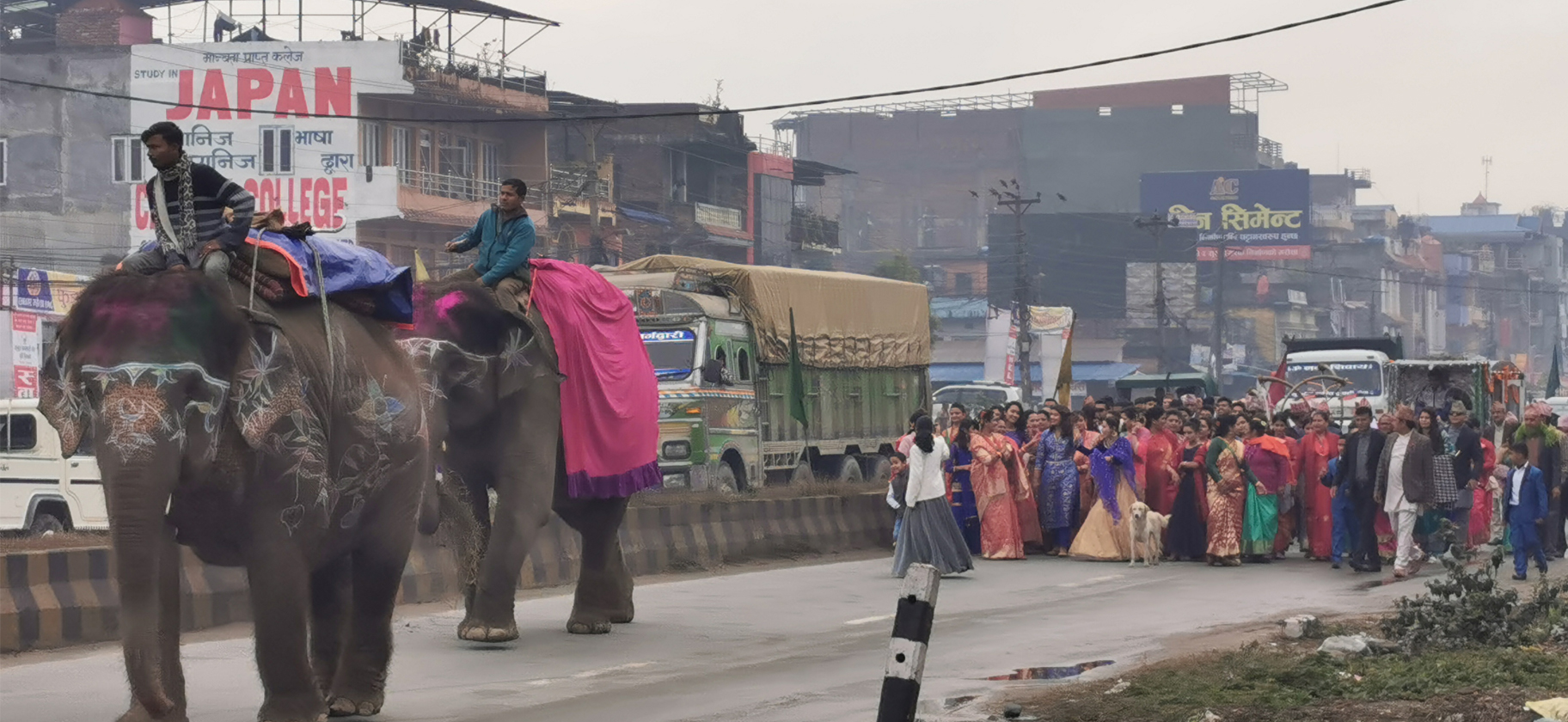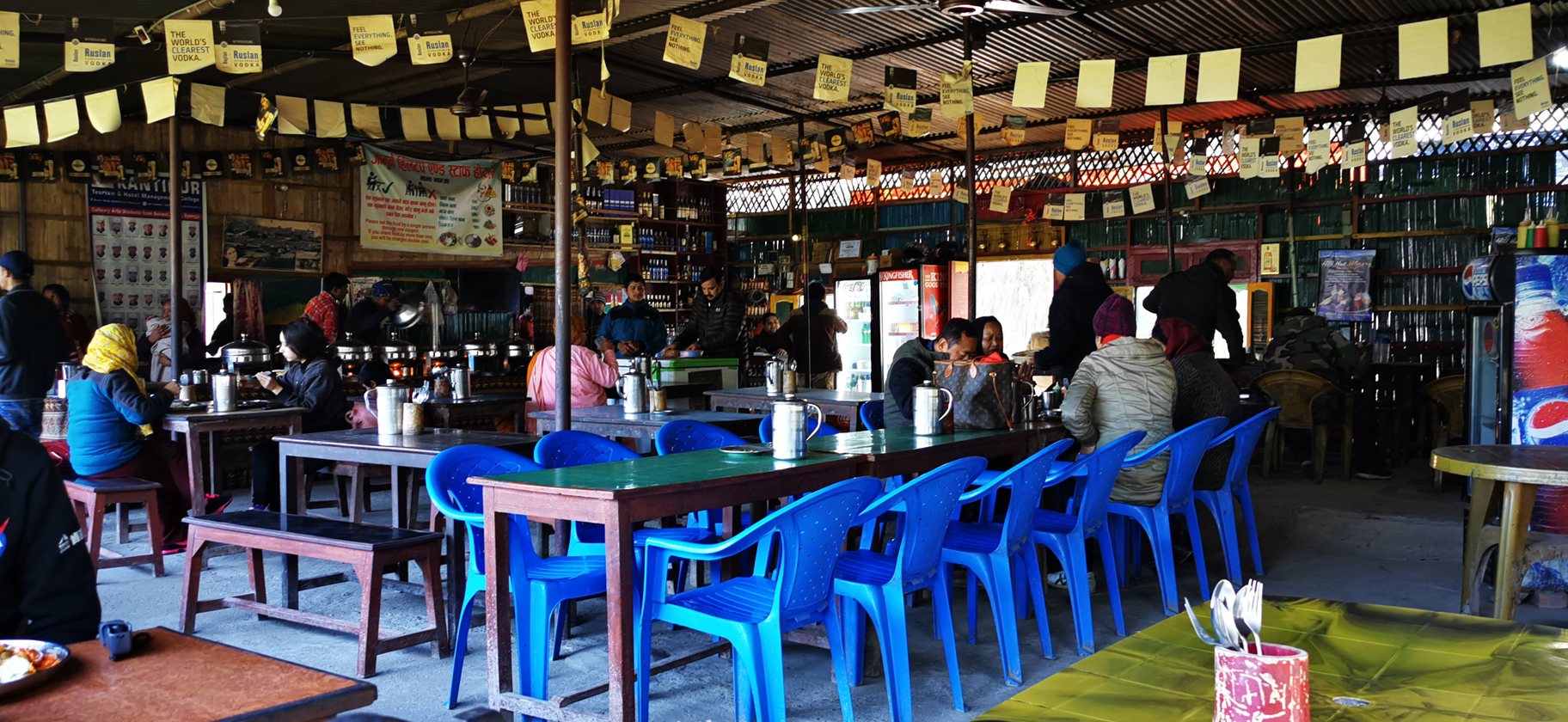The Street, the Bus, and the Mountain

There is something about bumpy roads, drastic fluctuations in altitude, and an all curry diet that combine to make every trip by bus in Nepal a real adventure. Over the course of my three-week visit, I took buses to get just about everywhere. The quality and comfort of each ride varied widely but there was always one constant – someone on board was going to lose their lunch.
When I was set to make my first journey from Kathmandu to Chitwan I had everything arranged by the hotel that I was staying at. Many people had given me advice on what to look for when it came to organizing a trip by bus anywhere in Nepal knowing that the quality and comfort of the trip could vary drastically, but everyone agreed that when travelling any significant distance it was always worthwhile to pay a little bit extra to ride on one of the designated tourist buses. I would later learn that the term “tourist bus” was a marketing ploy used to signify greater comfort, but that just about every bus from modern airconditioned cruisers to dilapidated jalopies would have the words “tourist bus” written on them.  That first trip, though, gave me a false sense of what to expect on buses in Nepal as it was by far the easiest of all of my rides. I had two seats all to myself, I was given a complimentary bottle of water, and the bus made frequent stops to let people go to the bathroom or get a small bite to eat. The trip took all day, but we rode all the way from Kathmandu to Chitwan. I would later learn that this type of ride was uncommon.
That first trip, though, gave me a false sense of what to expect on buses in Nepal as it was by far the easiest of all of my rides. I had two seats all to myself, I was given a complimentary bottle of water, and the bus made frequent stops to let people go to the bathroom or get a small bite to eat. The trip took all day, but we rode all the way from Kathmandu to Chitwan. I would later learn that this type of ride was uncommon.
Most buses are keen to bring on as many people as they can knowing that it is the number of bodies on board, not the comfort of the ride, that is most crucial to their bottom line and most people are going to find a way to squeeze themselves in no matter what the conditions. Some space is usually reserved for a couple of men who assist the driver. One hangs out of the door yelling at all of the folks along the way stating the destination and the route and they will let on anyone willing to hop aboard – there is no such thing as a bus that is full. The other man on board collects all of the money. The Nepalese bus attendant’s bladder is forged from iron and comfort stops on many buses are non-existent. On one particularly long trip, I found myself bursting at the seams and begging the attendant to make time for a bathroom stop which he reassured me he would but never did. Riding into one town and making the briefest of stops just to bring more passengers onto a bus that was already as full as my bladder, I busted my way through the crowd standing in the aisle and went rushing out the door to relieve myself by the nearest wall I could find. Sorry wall in the little town with a name I can’t pronounce, it was that or ruin everyone’s ride. Though the bus was rolling away when I was done, they knew that I’d be back and slowed enough to let me hop back on. I assumed that the seat I had been in for the last 4 hours would be taken and I would have to stand for the rest of the ride, but all aboard did their best to scooch over and politely escorted me back to where I was sitting.
 The towns that the buses pass through get all clogged up. The main routes run along the valley tracing the route of the rivers that flow through the country. Most towns are one main street with all of the shops and businesses on either side, and people will descend from their homes that are built along the hillsides to conduct the business of the day. Restaurants and shops spill out onto the road selling fruits and vegetables and local goods and most stores sell a little of just about everything that gets scattered about in heaps and piles. There is traffic of all kinds: automobiles, pedestrians, weddings and parades of elephants – the works. Towns are never too far apart and negotiating the way through them takes patience and a steady set of hands.
The towns that the buses pass through get all clogged up. The main routes run along the valley tracing the route of the rivers that flow through the country. Most towns are one main street with all of the shops and businesses on either side, and people will descend from their homes that are built along the hillsides to conduct the business of the day. Restaurants and shops spill out onto the road selling fruits and vegetables and local goods and most stores sell a little of just about everything that gets scattered about in heaps and piles. There is traffic of all kinds: automobiles, pedestrians, weddings and parades of elephants – the works. Towns are never too far apart and negotiating the way through them takes patience and a steady set of hands.
If you have purchased your ticket from an office in a town, this entitles you to a seat on a bus with an intercity bus company – assuming you are travelling between two major destinations. If you forego the ticket from the office you can still get on just about any bus willing to pick you up but you will likely be relegated to standing in the aisle. Some of the buses make long trips that take all day and there is no such thing as a ride along a perfectly paved road that is straight and smooth the entire way so it can feel like a workout. People in Nepal are polite and very trusting so it is not uncommon for those in a seat to hoist the children, who might otherwise be standing in the aisle, into their laps so that they don’t get bumped around for hours. White travellers from Europe and America would be exempt from this custom in the eyes of the locals, and even they are never pushy to burden anyone sitting with having someone then sit on them, but I was not about to have a child standing in that mosh pit if I could avoid it. That meant a lot of children fell asleep on me on a number of different trips and I even once had two children, one on each knee, fall asleep on me during a particularly long ride from Chitwan to Bhairahawa.
Many families beginning their journey at a major destination, I imagine as a cost-saving measure, would often purchase two seats and fit the whole family in there. To me, it seemed like they were uprooting their whole life with old trunks and cardboard boxes that they would hoist up onto the roof and pack down with bungee cords. Space and comfort did not seem to be something that was coveted by the locals and they never seemed to mind others encroaching into their personal space.
The scenery on most trips is majestic. At points, the highway narrows to where only one car can pass and there are long segments where it is not well paved. There are usually only a handful of ways to get anywhere, so people can get boxed in by oncoming traffic and getting stuck behind one slow-moving truck for several hours is common. It is slow going and the roads bob up and down suddenly leaving your stomach a few yards behind you when you do glide over a ridge and pick up speed heading downhill. Windows on the buses sensibly stay open for the comfort of all on board and the locals are accustomed to turning their heads to the side to expel what the body and the conditions are rejecting. The attendants on board will also pass around small plastic bags to everyone on board at the start of their trip, or as needed.
What can be infuriating is the number of people who somehow find a way to eat while onboard for the entire journey. It was rare to see passengers abstain from filling their bellies at the buffets at rest stops and even after just completing a full meal, many people would be on board snacking on oranges, animal crackers, or potato chips. On one ride, while sitting next to a woman with her teen-aged daughter and young son, for six straight hours they kept up their feast while purging the whole of it in measured chunks at least a half dozen times each over the course of the trip. How they failed to see the connection between what was going in and what was coming out escapes me.
